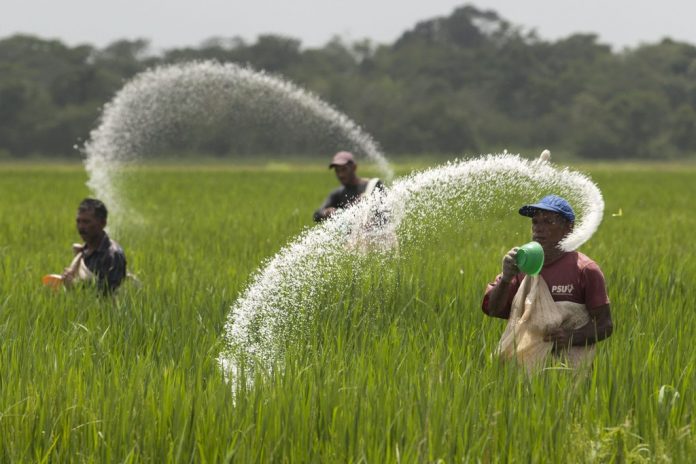LAHORE: Urea prices are expected to take another round of escalation amid an absence of government resistance after pushing Rs200 per bag since May 2018, industry sources told Pakistan Today.
They confirmed that the price increase would be taken within a few days and would be initiated with Rs50 per bag during the transitory period, whereas the interim set-up in place did not show any resistance against the last time the price was increased.
However, they agreed that demand dynamics might need to be considered before implementation of further increases in prices.
Sources informed that the ex-factory price of urea is to stand at Rs1,620 per bag after the latest increase. Soaring international urea prices of 24 per cent coupled with local currency weakness have widened the discount between local and global prices of 28 per cent. This has also enabled domestic manufacturers to raise prices.
Fertiliser manufacturers have increased Diammonium phosphate (DAP) prices by Rs150 per bag last month with the new price range that stands around Rs3,377 to Rs3,510 per bag, translating into a cumulative hike of Rs400 to Rs500 per bag.
The increase in prices came in the backdrop of rising import costs given the price increase is based on a ‘cost push’, the same is unlikely to impact margins of fertiliser players, particularly importers.
According to an estimate, every Rs50 per bag increase in urea prices has the potential to
increase profits on a monthly basis. They highlighted that the price increase was not incorporated in estimates as such as represents an upside risk.
On the other hand, the fertiliser review committee is considering to put forward a summary following the bridging emerging supply shortfall in the upcoming rabi season for providing
72 per cent RLNG and 28 per cent natural gas to closed urea manufacturing plants.
Calculations suggests that at current RLNG and urea prices, resumption of production may
not be feasible, as the cost of gas and packaging cost alone would amount to Rs1,494 per
bag, which would leave a margin of just Rs76 per bag.
The industry sources mentioned that f the government waives the Gas Infrastructure Development Cess (GIDC) then the weighted average cost of gas would reduce to Rs1,387/bag, which would increase the contribution margin to Rs183 per bag.
They pointed out that operations on RLNG influenced margin per bag of urea to an average of Rs250 to Rs300 per bag. While the resumption of production from closed urea plants does represent a threat to the pricing power of the sector that was of 978 thousand tons capacity. They said that the likelihood of resumption of production from these plants remains low unless the government doles out a hefty subsidy on RLNG.
With increasing possibility of a shortage of domestic urea for upcoming Rabi season,
sources believe the upcoming government may opt for either a reduction in LNG costs to
facilitate the re-commencement of operations of small LNG-based fertiliser players, or allowing urea imports where the landed cost of internatioanl urea is currently trading at 27 per cent premium to local.
While the fiscal year 2017 witnessed strong volumes, receding supply from RLNG based players, and consequently inventory drawdown, fiscal 2018 held prospects of rising margins amidst increasing pricing power on the back of strong farm economics, rising international fertiliser prices, uncertainty over provincial governments’ subsidy scheme, and
the potential absence of strong government resistance to increase in urea prices during the interim set-up.
























